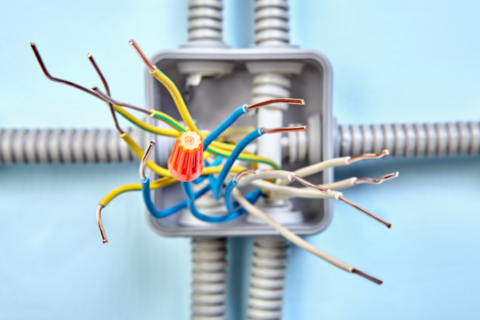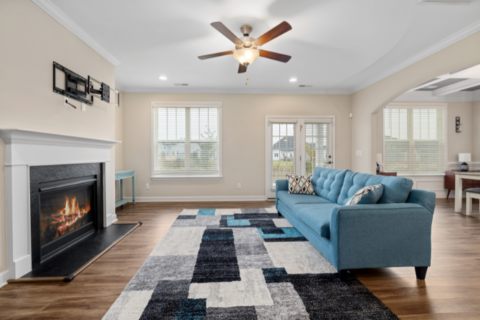Tripping Breakers: Understanding the Causes and Finding Solutions
Breaker Keeps Tripping
As a homeowner in the beautiful zip code of 02903 in Downtown Providence, Rhode Island, it is essential to understand how your home’s electrical system works and what to do if it is not functioning properly. One of the most common issues homeowners face is a tripping breaker, which can not only be frustrating but also potentially dangerous.
At B&K Electric, our family-owned and operated business has been serving the residents of Cranston, Warwick, and all of Rhode Island for over seventeen years. With our expertise in electrical repairs, panel maintenance, and installation, we have encountered numerous cases of tripping breakers and are here to share our knowledge with you to help avoid and solve this problem.
Electricity is a vital aspect of our daily lives and is used in almost every aspect of our homes, from lighting and cooling to powering our devices and appliances. It is why a tripping breaker not only affects our comfort but also can disrupt our daily routines and, in some cases, indicates a more significant issue within the electrical system.
So, what exactly is a tripping breaker, and what causes it? Let’s dig in and understand this problem better.
What is a Tripping Breaker?
A breaker is a safety device that is a part of your home’s electrical system. It is designed to shut off the flow of electricity if there is an overloaded or faulty circuit, preventing potential electrical fires and protecting your home and appliances.
A tripping breaker occurs when there is an excessive amount of current flowing through the circuit, causing the breaker to trip or shut off to prevent any further damage or harm. It is a safety mechanism that is built into the breaker to prevent any overloading that can lead to more severe consequences.
Now that we understand what a tripping breaker is let’s look at some of the common reasons why it may occur in your home.
Causes of a Tripping Breaker:
1. Overloaded Circuit:
The most common cause of a tripping breaker is an overloaded circuit. It happens when there are too many appliances or devices running on the same circuit, drawing more current than the circuit can handle. As a result, the breaker trips to prevent overheating and potential electrical fires.
2. Short Circuit:
A short circuit occurs when the hot wire, neutral wire, and ground wire come into contact with each other, resulting in a flow of uncontrolled electricity and potentially tripping the breaker.
3. Faulty Appliances:
An old or faulty appliance with frayed or damaged wires can cause a short circuit, leading to a tripping breaker.
4. Ground Fault Circuit Interrupter (GFCI) Tripping:
GFCIs are outlets designed to protect you from electric shocks by automatically tripping the circuit if there is any imbalance in the electricity flow. It can be triggered by a faulty appliance, water entering the circuit, or a wiring issue.
5. Circuit Overheating:
Circuits can overheat due to loose or faulty connections, corroded wires, or a damaged breaker. These issues can cause a surge of electricity, leading to the breaker to trip.
Solutions to Tripping Breakers:
Now that we have looked at the common causes of tripping breakers let’s explore some solutions on how to prevent it from happening or dealing with it if it does occur.
1. Identify Overloaded Circuits:
By paying attention to which appliances are being used simultaneously, you can determine which circuit may be overloaded and either reduce the load or balance the use of appliances across multiple circuits.
2. Unplug Faulty Appliances:
If you notice a tripping breaker that is related to a particular appliance, it is best to unplug it and have it repaired or replaced to avoid further issues.
3. Test GFCIs:
If you have GFCIs in your home, it is essential to test them regularly to ensure they are functioning correctly. If they are consistently tripping, it may indicate a more significant issue and require professional help.
4. Check for Overheating:
Inspecting for loose or faulty connections, corroded wires, or damaged panels can help prevent circuits from overheating and, as a result, tripping the breaker.
5. Seek Professional Help:
If your breakers continue to trip or if you are not comfortable dealing with electrical issues, it is best to seek help from a licensed electrician. At B&K Electric, we are experienced, trained, and equipped to handle any electrical problems efficiently and safely.
In today’s world, we rely heavily on electricity, making it essential to address any electrical issues promptly. By understanding the causes and solutions to tripping breakers, you can prevent potential hazards and keep your home and family safe.
Conclusion:
A tripping breaker is a common issue that homeowners face, but it can be easily avoided or solved by identifying the underlying cause. Whether it is an overloaded circuit, faulty appliance, or a wiring issue, it is essential to address it promptly to prevent any potential hazards. However, if you are uncomfortable dealing with electrical issues, do not hesitate to seek professional help from licensed electricians like B&K Electric. By taking necessary precautions and addressing any issues, we can keep our homes and our families safe and sound.
Topics:


